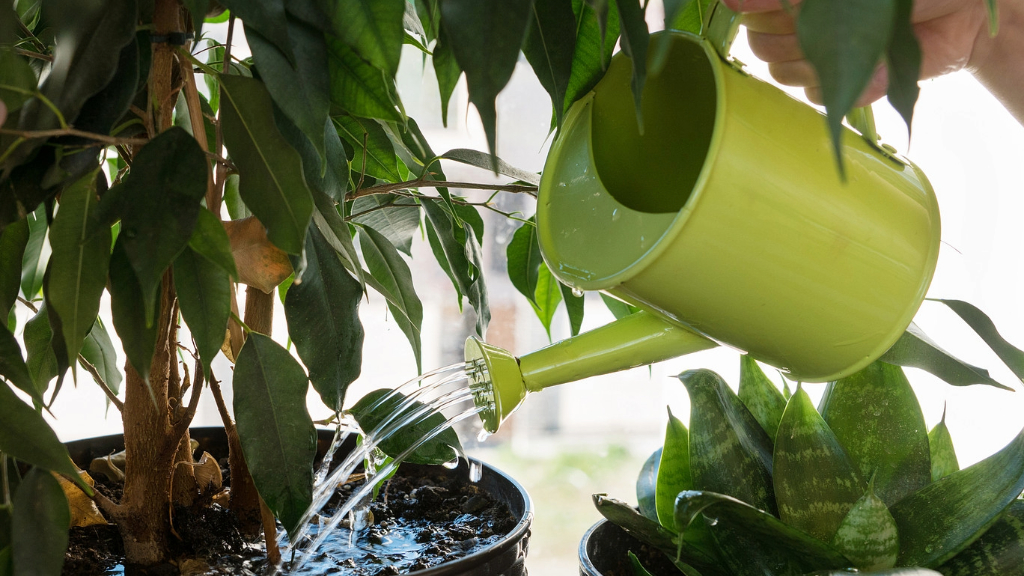Plant Resuscitation: 7 Tricks To Bring Dead Plants Back To Life


If a plant is really, truly a goner, you'll need a magic wand to help. But many plants that look dead can be resuscitated with prompt, effective action. Here's a short list of 7 things you can try to revive a dying plant.
- Take a close look at the damage. Most ailing plants are suffering from improper cultural care. Your best chance of helping the plant is to figure out what's going on, so look carefully at the damage. Drooping, yellowing leaves can indicate too much water. Brown, dry leaves and stems may mean too little water. Scorched or transparent leaves? Too much or too little sun. Deformed or nibbled leaves signal pests.
- Prune away dead foliage. You won't be able to assess the chance of reviving your plant if it is choked with dead leaves. Clip off all dead leaves and branches from plants that look dead and remove all fallen foliage. If you aren't sure whether a branch is dead, try the scratch test - use a fingernail to scrape off some of the outer layer of skin. If you see green inside, it's alive and should not be removed. Keep the faith! Any green, flexible stems make it likely you can revive your plant.
- Water a thirsty plant. A plant's home is its container or garden bed, so dig around in the soil for evidence. If the soil is hard, compacted, cracked and dry, inadequate water is probably the issue. This kind of damage can be corrected quickly if you catch it in time. It's easy to rehydrate dry plants. Pour water into the plant pot until it runs freely from the drainage holes in the bottom. After that, hose or spray down all remaining stems and foliage. Plants intake water through their leaves as well as their roots.
- Let soggy soil dry out. If the container soil is wet to the touch even though you haven't watered in a while, the plant's is suffering from excess water caused by overwatering or poor drainage. Stop watering immediately and let the soil dry out. Check the pot's drain holes. A small plant container needs a drain hole of at least ½ inch (1.2 cm.) diameter, while a larger plant container needs holes twice that size. If your pot's drainage is inadequate, it's time to transplant.
- Adjust the sun exposure. Some plants need direct sun, some indirect sun and some shade. If you aren't sure what this particular plant prefers, find out online or at the garden store. Then move the plant into an appropriate location.
- Provide humidity. For some plants, getting enough water is not sufficient. Plants like ferns require humidity to thrive, humidity that the average living room might not offer. This can be solved quickly. Place a shallow pan filled with small rocks beneath the plant and add a little water. The water will evaporate and humidify the air near the plant.
- Consider repotting. Over time, most plants outgrow their pots. The roots may even wind around the inside of the container, making it difficult for them to uptake water and nutrients. Gently remove the plant from its container. If you see more roots than soil, or roots coiling round the inside of the pot, it is time for a bigger container. Sometimes, all it takes to revive a dying plant is a little repotting.
Plant resuscitation isn't always successful, especially if it's too far gone. However, it doesn't mean plants that look dead cannot be given new life. It never hurts to at least try - who knows, you may just have what it takes to bring dead plants back to life before it's too late.
Gardening tips, videos, info and more delivered right to your inbox!
Sign up for the Gardening Know How newsletter today and receive a free copy of our e-book "How to Grow Delicious Tomatoes".

Teo Spengler is a master gardener and a docent at the San Francisco Botanical Garden, where she hosts public tours. She has studied horticulture and written about nature, trees, plants, and gardening for more than two decades. Her extended family includes some 30 houseplants and hundreds of outdoor plants, including 250 trees, which are her main passion. Spengler currently splits her life between San Francisco and the French Basque Country, though she was raised in Alaska, giving her experience of gardening in a range of climates.
-
 Terrifically Tubular Flowers For Hummingbirds: 9 Tube-Flowered Plants To Attract Hummers
Terrifically Tubular Flowers For Hummingbirds: 9 Tube-Flowered Plants To Attract HummersGrowing tubular flowers for hummingbirds helps you create the optimum feeding conditions for your winged friends. Here are nine tubed delights for hummers
By Tonya Barnett
-
 How To Grow Hydroponic Tomatoes For Fresh Indoor Harvests – No Soil Required
How To Grow Hydroponic Tomatoes For Fresh Indoor Harvests – No Soil RequiredLearning how to grow tomatoes in water is easy and allows you to harvest fresh-home-grown produce in every season without any mess.
By Ellen Wells